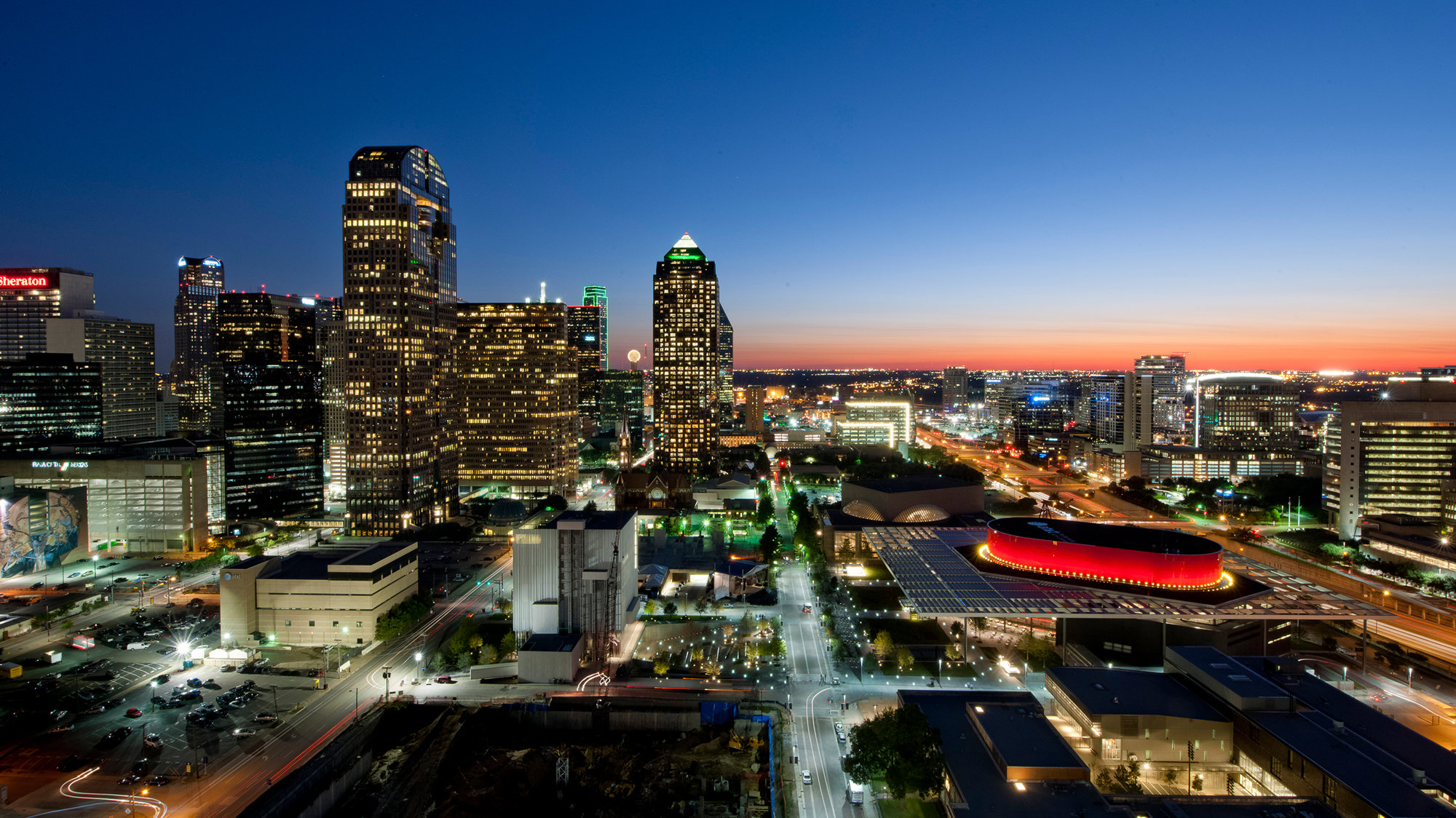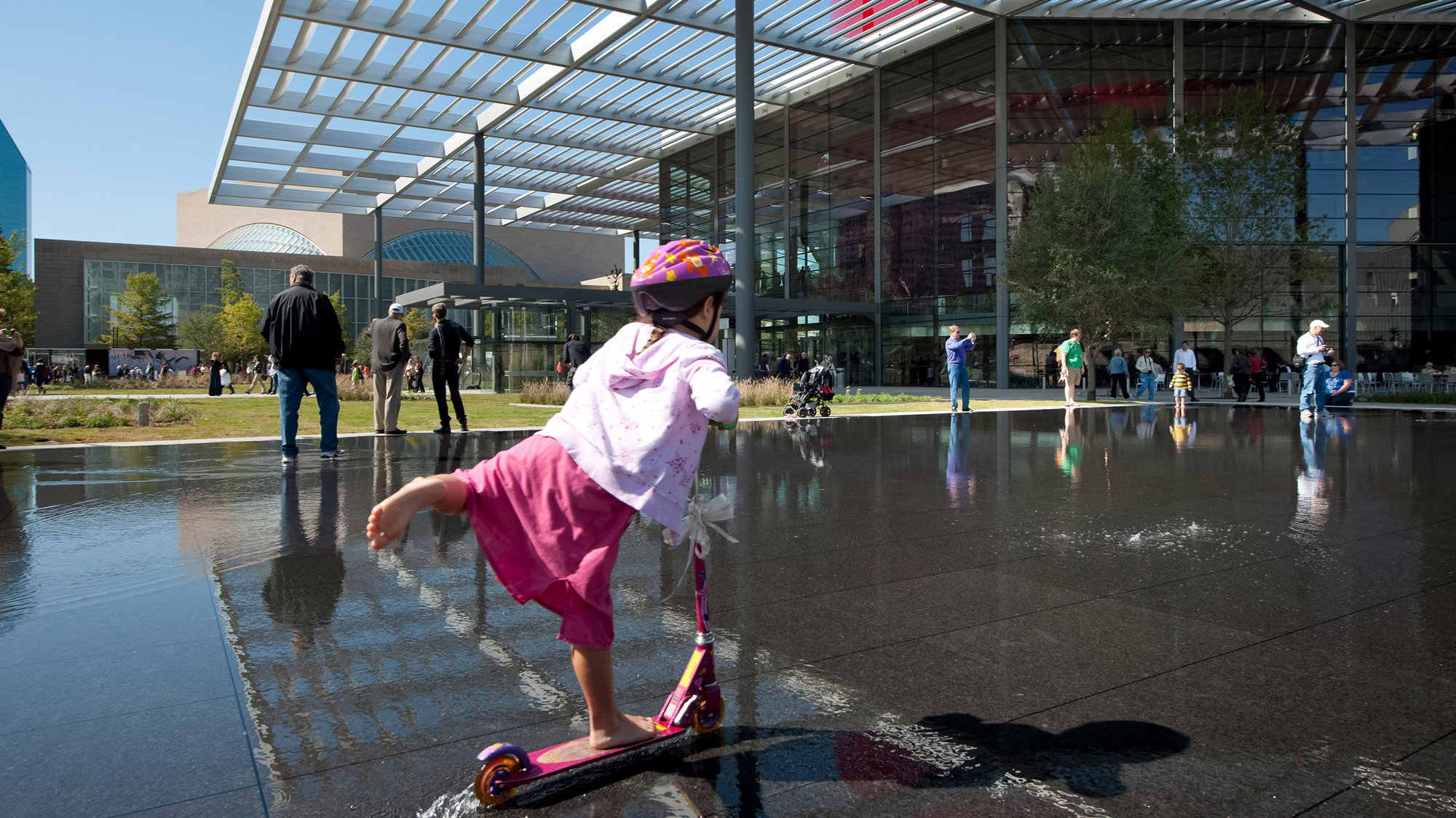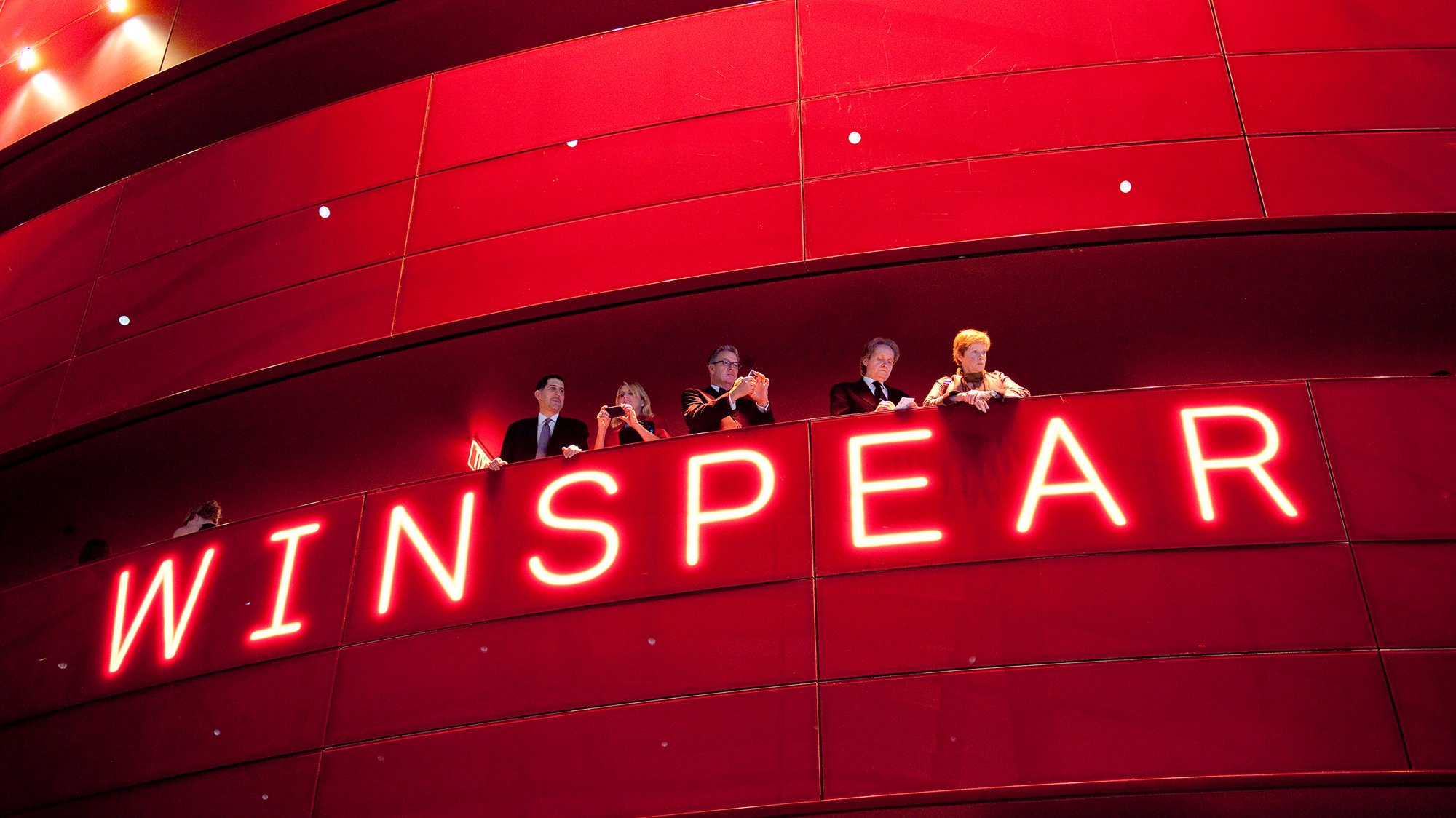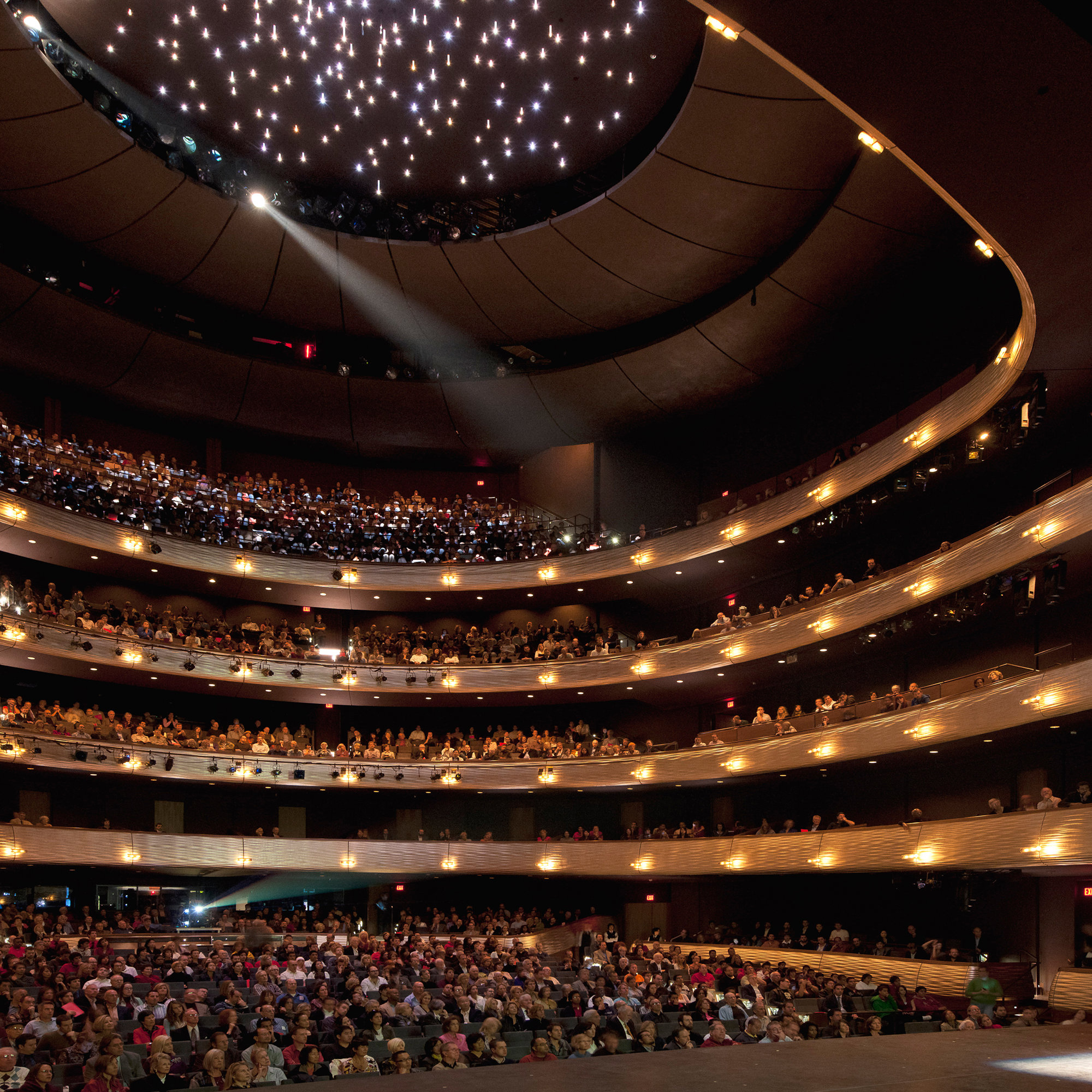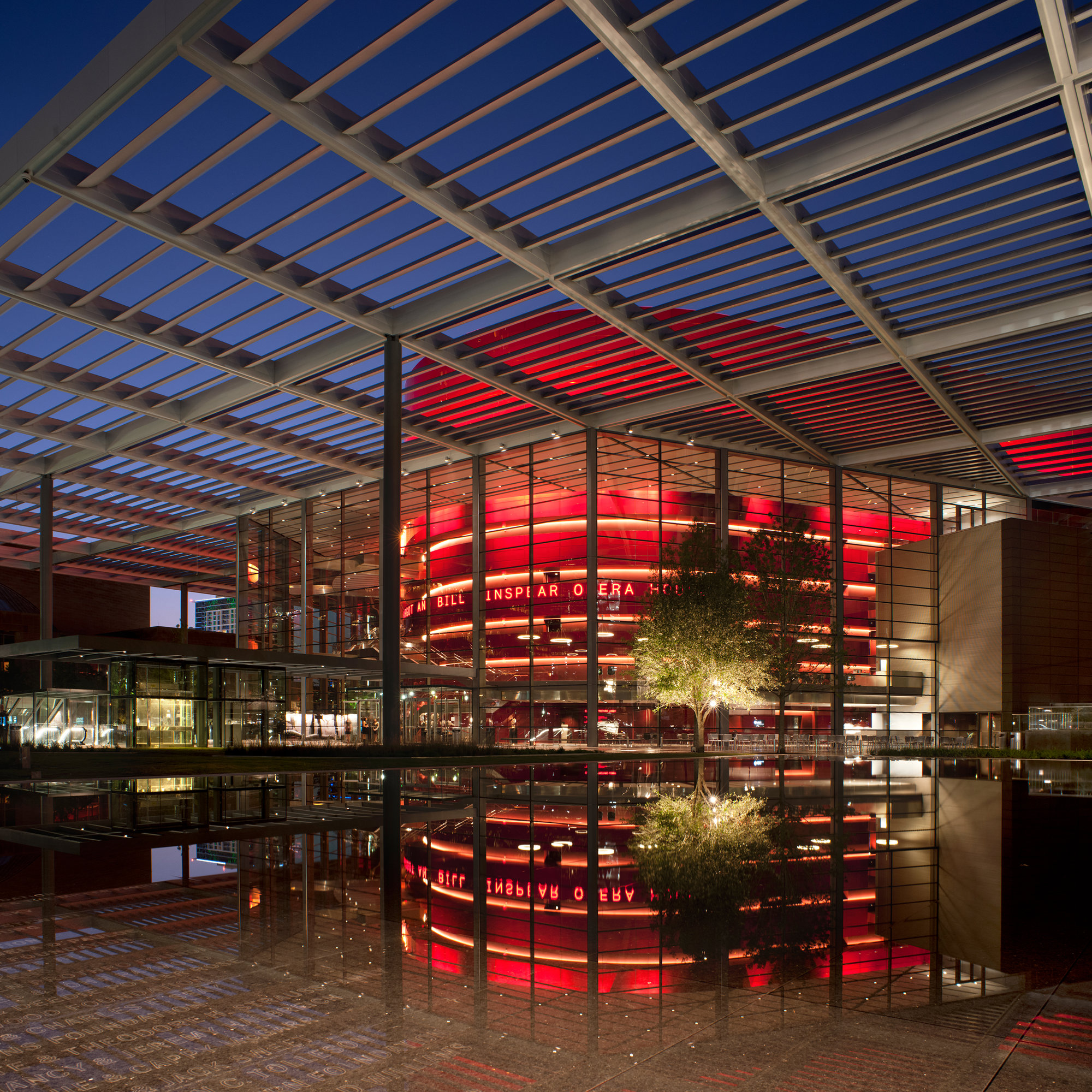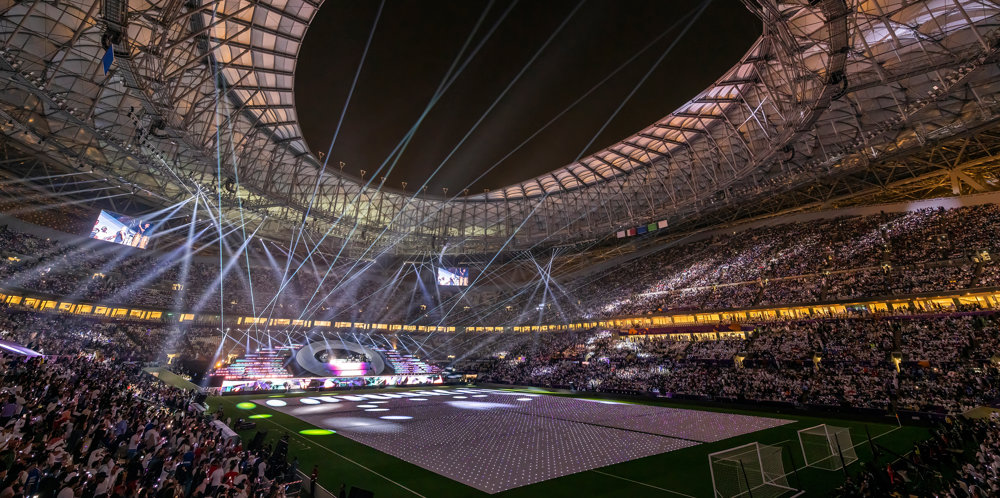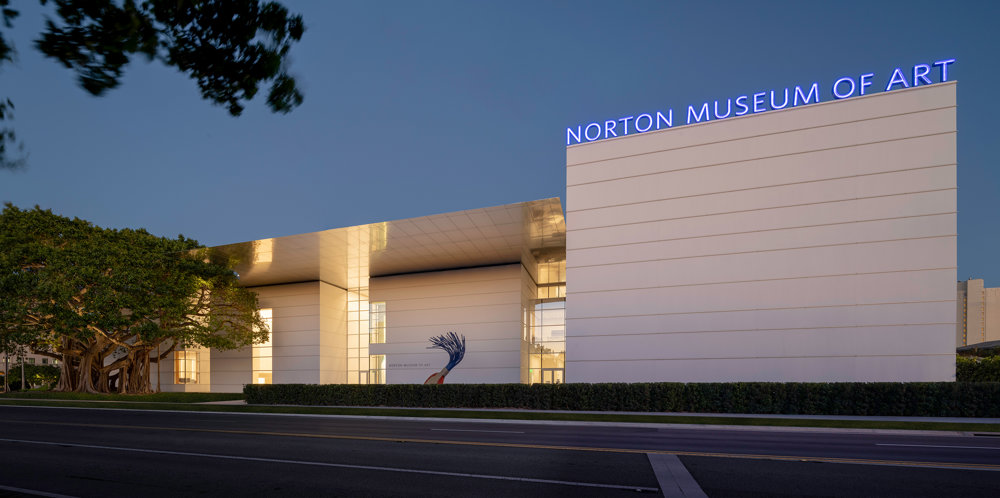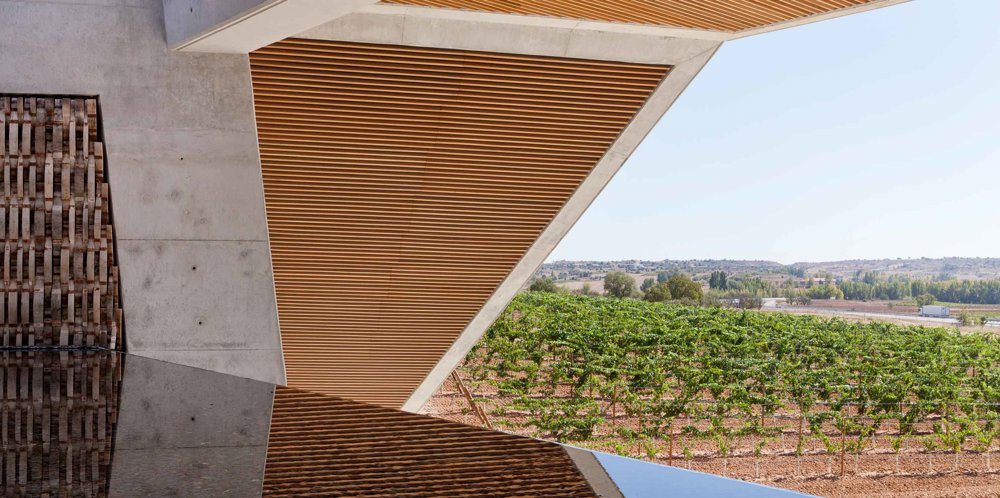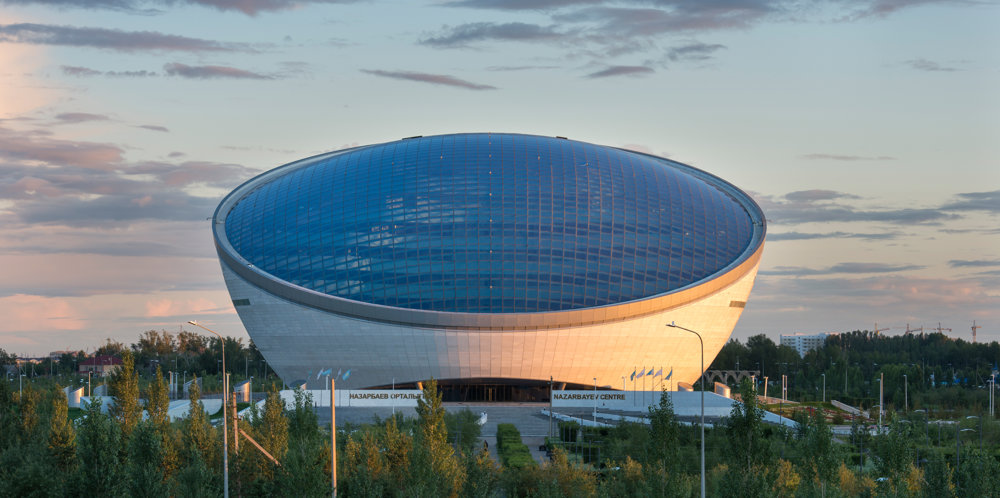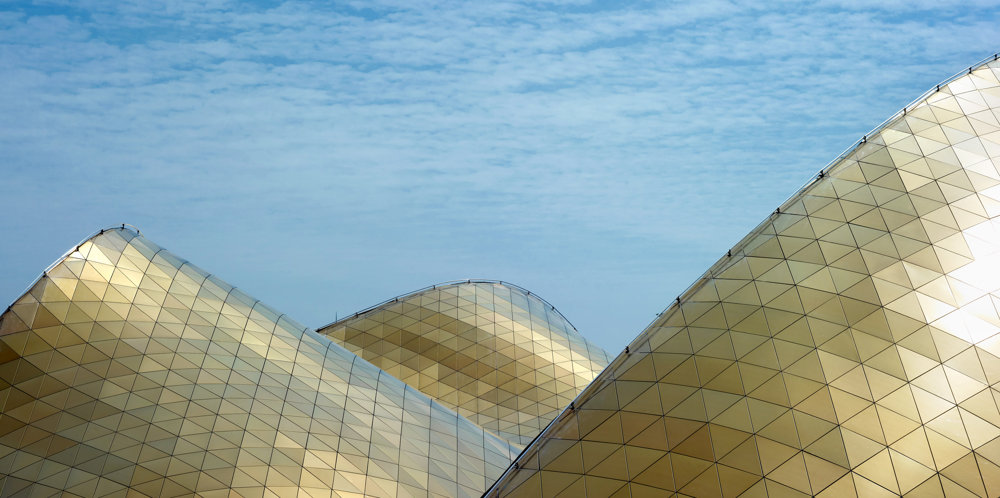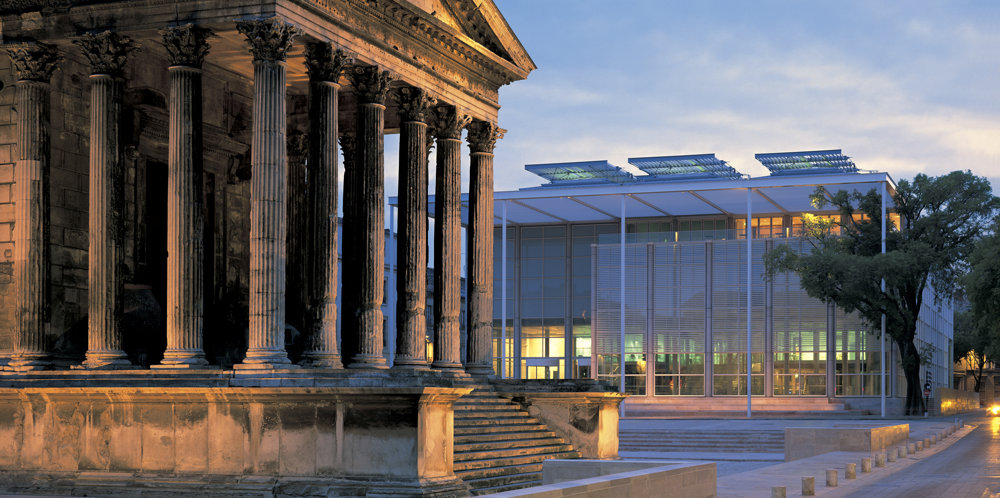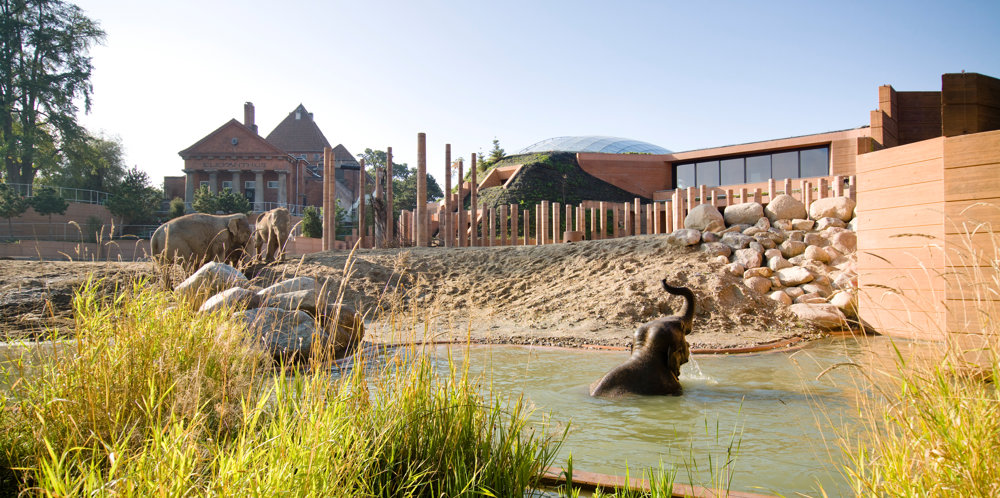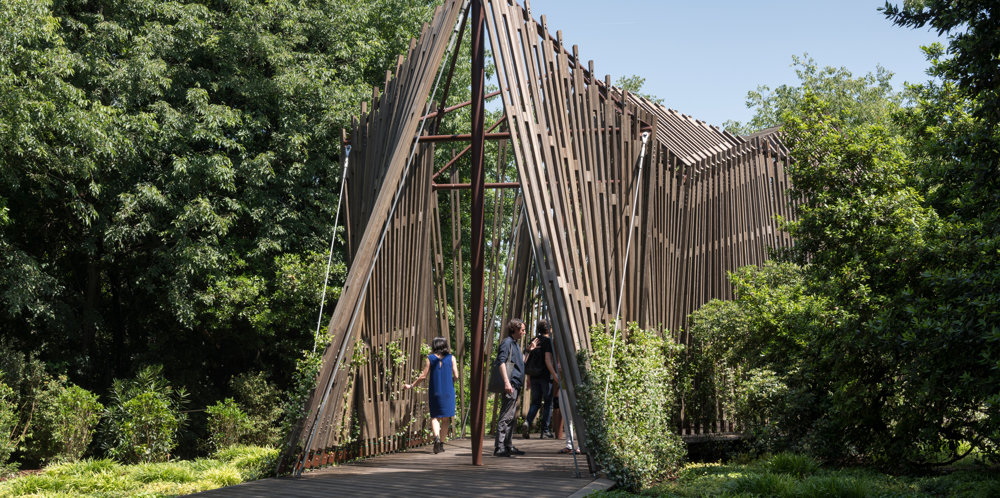The Dallas Opera Company is renowned for its dedication to excellence and innovation in lyric theatre and that commitment was reflected in the brief for its new home in Dallas’ Arts District. Representing a radical rethink of the traditional operatic experience, the design aimed to address the question: ‘What is the nature of the opera house in the twenty-first century?’ The ambition was to create a building that would not only play a central role in the cultural life of Dallas, but could become a destination in its own right for a non-opera-going public, with a café, restaurant and bookshop that would be accessible throughout the day.
The design of the opera house follows the practice’s formulation of a masterplan for the entire Dallas Arts District, which contains buildings by three other Pritzker Prize winners – Rem Koolhaas, IM Pei and Renzo Piano – and provides a venue for everything from the visual and performing arts to outdoor festivals and concerts, youth education programmes and much more. The new buildings are grouped along the ‘green spine’ of Flora Street. The Winspear Opera House itself looks out on to the Annette Strauss Artist Square outdoor performance space and provides a natural focal point for the entire district.
Organisationally, the Winspear inverts the traditionally closed, hierarchical structure of the opera house to create a series of welcoming spaces that wrap around the rich red drum of the auditorium. The auditorium follows a horseshoe configuration, which is perfect for opera, and can seat up to 2,200 people. Its acoustics have been engineered specifically to suit opera and musical theatre, although the stage is flexible enough to accommodate performances of ballet and other forms of dance. In elevation the building is transparent, its glass walls revealing views of the concourse, the upper-level foyers and grand staircase. Entered beneath a spreading canopy that shades the reception spaces from the harsh Texan sun, the transition from the plaza, through the foyer to the auditorium is designed to heighten the drama of attending a performance – in effect, ‘to take the theatre to the audience’.










